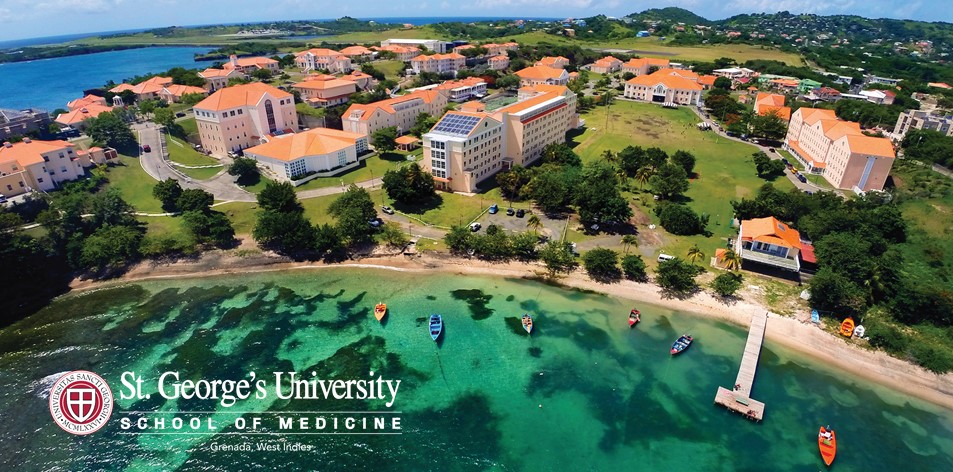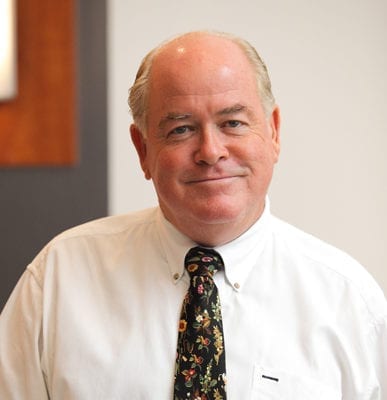
Comparing International Medical Schools: 5 Factors Parents of Aspiring Medical Students Should Keep in Mind
Bob Ryan, Dean of Admission, St. George’s University in Grenada.
As a parent, you’ve been able to guide your child through a lot of firsts. It was pretty easy teaching them things like how to tie shoelaces and how to fold their laundry. But as your child has grown into an adult looking to attend an international medical school, their new endeavors are becoming more complicated.
You might not be able to offer much help when your child needs to start studying for entry exams or gaining physician shadowing experience.
You’re certainly not alone.
Many parents looking at international education options have found themselves navigating the medical school application and selection process right alongside their children. For many of them, comparing medical schools can be especially intimidating.
While students are the ones who ultimately need to do the legwork and decide which programs would be the best fit for them, it might be helpful for you to get up to speed as well. Educating yourself on how to compare programs can help you better understand what your student is going through and give you a frame of reference for when they want to discuss something specific.
ELEMENTS YOUR CHILD SHOULD CONSIDER WHEN COMPARING MEDICAL SCHOOLS
These are considerations you and your child will need to think through when comparing medical schools. Just be careful you don’t overstep. Your job is to offer support and help empower your student to make their own educated decision.
1. USMLE STEP 1 PERFORMANCE
Most physicians will tell you the United States Medical Licensing Exam (USMLE) Step 1 is the most important test they took during medical school. This is why it’s essential that young people who want to study medicine verify the programs they’re considering adequately prepare students for this exam series.
It’s wise to look into pass rates and average scores across different programs. Keep in mind that, according to performance data released by USMLE, 97 percent of examinees from US and Canadian schools taking Step 1 for the first time in 2019 passed. That’s a quality standard you would want to see from international schools as well.
2. GRADUATE SUCCESS
You’ve probably known of several great medical schools for most of your life. Programs create that name recognition by developing a history of educating successful graduates. A successful alumni network is a great measure of a successful medical school, for example St. George’s University has contributed over 18,000 physicians to the global physician workforce, with students, graduates, and faculty from over 150 countries. They have practiced in every state in the US, as well as in more than 50 countries.
3. THE LOCATION
No aspiring medical student should be too picky when it comes to location. Gaining acceptance to a quality medical school is tough. That said, your child can certainly keep location in the back of their minds if they find themselves with multiple options.
Location also comes into play later on. Some medical students, and perhaps your child, already know where they want to practice one day. Your son or daughter may have a better chance of securing a residency in that area if they’re able to meet physicians through volunteer work or clinical rotations. This means it’s also important to look into where a schools’ clinical rotations take place—some programs offer a variety of options for students.
Consider that going farther away from home can sometimes be a positive aspect for medical students as well. It may be easier to focus on their studies without the temptation to go out with friends who aren’t facing the rigors of medical school. It can be really hard to hibernate away from your friends to focus, instead of studying in a cocoon with friends who prepare the same exam.
Medical schools with multiple global locations may also appeal to your child due to the international education they will have exposure to. St. George’s University has a unique opportunity for students to begin their medical education in Grenada, the United Kingdom, or India. The three paths feature the same curriculum and provide a strong foundation for future physicians. The last two years have the option of doing clinical rotations either in the US or the UK
4. ABILITY TO PURSUE PERSONAL INTERESTS
It’s easy to chiefly focus on entry requirements and residency placements when comparing medical schools.
While those are important factors to consider, students shouldn’t forget about their personal interests. Some schools offer opportunities to further certain passions through organizations, events, and more. Those can be valuable for students.
How would students ever grow as humans, and as doctors, if they read the same books and learned the things without also going forward via their personal interests?
5. FINANCIAL FEASIBILITY
Tuition and fees are probably on your mind—and possibly your child’s as well. While cost alone shouldn’t determine where your student attends school, it’s certainly worth considering.
And keep in mind that evaluating the cost of any program should include numerous factors. When it comes to medical school, you really do get what you pay for.
START THE JOURNEY WITH YOUR STUDENT
If your child receives the good news that they’ve been accepted into medical school, be sure to celebrate. It’s a huge accomplishment. Taking time to enjoy moments like this is important during the rigorous process of becoming a doctor.
It’s also important to keep in mind that medical school itself is sure to bring some new challenges. Make sure you and your child know what it takes to excel.
Bob Ryan

Dean of Admission
Following a successful career in corporate America, Bob Ryan began his tenure at St. George’s University in 1994, when his role was to assist in advising the approximately 250 new medical students that attended SGU each year. He now travels the world on behalf of SGU to meet with students and parents, and work with academic institutions and governments, all in support of the University’s mission to attract students from around the world. He is amazed at SGU’s growth and is very proud to be part of the St. George’s family. Now a Florida and New York resident, Mr. Ryan enjoys boating, gardening, and great flea market finds.
How Clinical Rotations Prepared One St. George’s University Graduate for Residency and Fellowship
St. George’s University Gallery
Location:
Grenada, West Indies.







